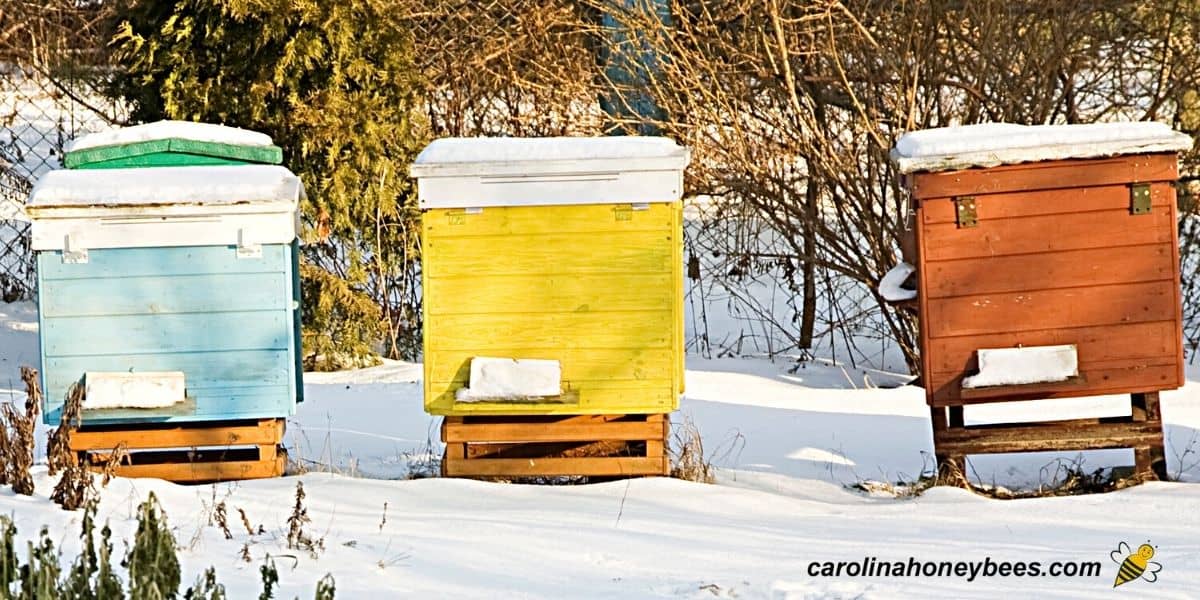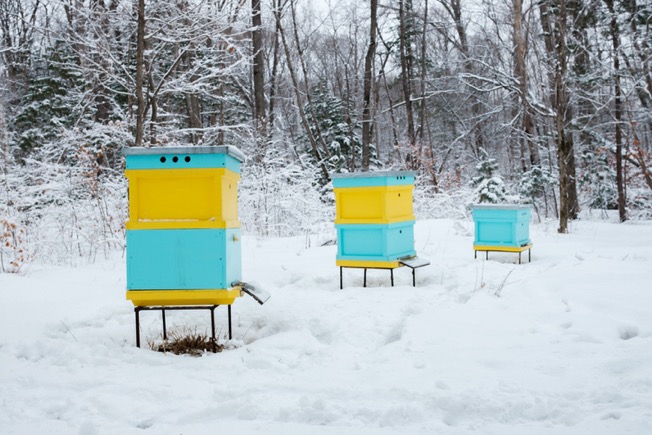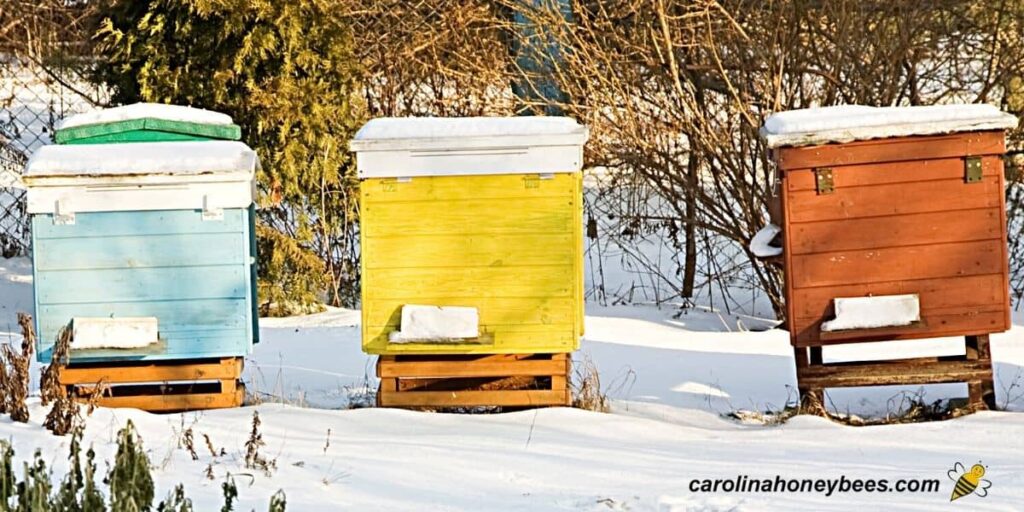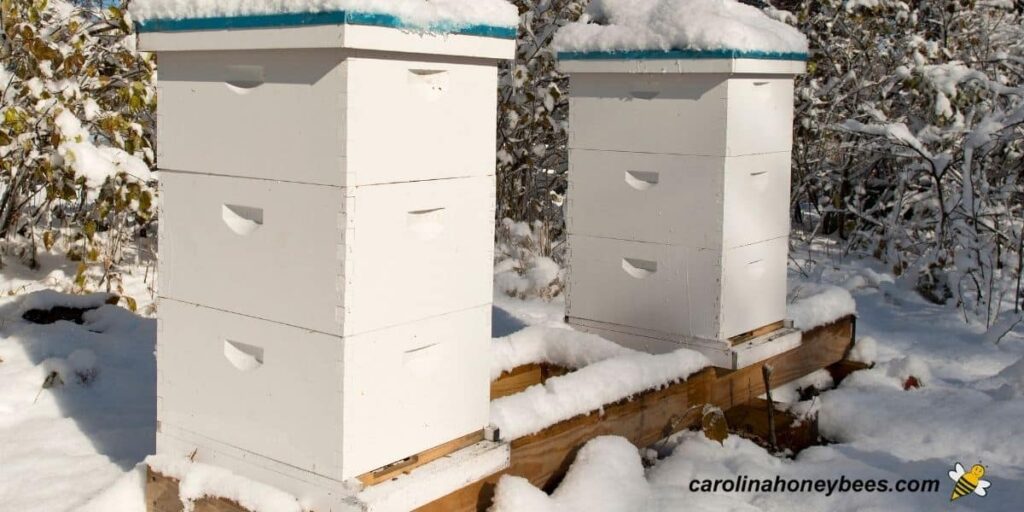
As the days grow shorter and the temperatures drop, it’s time to start thinking about how to prepare your bee hive for the upcoming winter months. Ensuring that your precious buzzing colony is well-prepared for the cold is crucial for their survival and success. From insulating the hive to providing enough food stores, this article will guide you through the essential steps to keep your hive healthy and thriving during the winter season.

1. Inspect the Hive
1.1 Cleaning and sanitizing
Before winter sets in, it is crucial to clean and sanitize your hive. Start by removing any debris, dead bees, and old frames. These can harbor diseases and pests that can cause harm to your colony. Use a hive tool to carefully scrape off any propolis or wax buildup from the frames and walls of the hive. Once the hive is clean, sanitize it with a gentle bleach solution or a hive disinfectant to eliminate any remaining pathogens.
1.2 Checking for damage
Inspecting for any damage to the hive is essential to ensure that it provides ample protection for your bees throughout the winter. Look for cracks, gaps, or holes in the hive boxes or frames. Replace any damaged components to prevent drafts and heat loss. Pay special attention to the hive’s roof and bottom board, as these areas are prone to damage from weather conditions. It is also important to check the integrity of the hive’s entrance reducer to ensure that it is in good condition.
1.3 Assessing the population size
Before winter, it is crucial to assess the population size of your hive. A strong and healthy colony is more likely to survive the cold months. Inspect the hive frames to gauge the number of bees present and the amount of brood. Ideally, the colony should have enough bees to cover most of the frames and sufficient brood to ensure the continuation of the colony. If the population seems low, it may be necessary to combine weaker colonies or obtain a new queen to strengthen the hive.
2. Addressing Ventilation
2.1 Maintaining proper airflow
Proper ventilation is vital for the survival of honeybee colonies during winter. Bees produce moisture as they consume honey and generate heat to keep warm. Without adequate airflow, excess moisture can accumulate, leading to condensation and potential mold growth. Ensure that there is a ventilation hole or top entrance in the hive to allow for proper air exchange. This will help regulate humidity levels and prevent moisture-related issues.
2.2 Installing winter entrance reducers
To conserve heat and prevent cold air from entering the hive, it is advisable to install winter entrance reducers. These reducers decrease the size of the hive entrance, making it easier for bees to defend against predators and maintain a warm environment. The reduced entrance also helps prevent the entry of mice and other small pests that may seek refuge in the hive during winter. Install the entrance reducer after your last honey harvest, ensuring that there is still sufficient space for the bees to enter and exit.
3. Providing Adequate Food Stores
3.1 Assessing honey reserves
One of the critical factors for surviving winter is having an adequate food supply. bees rely on stored honey for nourishment during the colder months when forage is scarce. Before winter, assess the honey reserves in your hive. Ideally, the colony should have around 40-60 pounds of honey to sustain them until spring. If honey supplies are insufficient, consider feeding the bees with sugar syrup to supplement their diet.
3.2 Supplementing with sugar syrup
In cases where the honey reserves are low, it is crucial to supplement the bees’ diet with sugar syrup. Prepare a mixture of granulated sugar and water in a ratio of 2:1 (2 parts sugar to 1 part water) and provide it to the bees in a feeder. Place the feeder inside the hive, ensuring that it is easily accessible for the bees. Regularly monitor the sugar syrup levels and refill as necessary to ensure the bees have an ample food supply throughout the winter.
3.3 Considerations for feeding pollen substitutes
While honey provides carbohydrates, bees also require protein for their overall health and development. During winter, when natural sources of pollen are scarce, consider feeding the bees pollen substitutes. These substitutes are commercially available and can be provided to the bees in patties or powder form. Consult with experienced beekeepers or local experts to determine the appropriate timing and quantity of pollen substitute to feed your colony.
4. Protecting from Moisture
4.1 Reducing condensation
Moisture buildup within the hive can be detrimental to the bees’ health. Excessive condensation can lead to mold growth, weakened bees, and increased susceptibility to diseases. To reduce condensation, provide proper ventilation as mentioned earlier. Additionally, insulate the hive to prevent temperature fluctuations that can contribute to moisture buildup. Avoid opening the hive unnecessarily during winter, as it can introduce cold air and disrupt the hive’s moisture balance.
4.2 Using insulation
Insulation plays a crucial role in protecting beehives from extreme temperature changes and moisture. Wrap the hive with insulating materials such as foam boards or blankets, ensuring that they cover all sides and the top. Insulation helps retain heat generated by the bees and minimizes the risk of cold spots within the hive. It also acts as a barrier against drafts and reduces the cooling effect of wind on the hive.
4.3 Ventilation strategies in damp climates
If you live in an area with high humidity or frequent rainfall, it is important to implement additional ventilation strategies to prevent excessive moisture buildup. Consider using moisture-absorbing materials such as desiccant packets or absorbent pads inside the hive. These materials can help absorb excess moisture and maintain a healthier environment for the bees. Regularly monitor the hive’s moisture levels and adjust ventilation or insulation as needed.

5. Minimizing Varroa Mite Infestation
5.1 Integrated Pest Management (IPM)
Varroa mites are a significant threat to honeybee colonies. Implement an Integrated Pest Management (IPM) approach throughout the year to minimize mite infestation. This includes regular mite monitoring, timely treatment, and the use of resistant bee stock. By controlling mite levels during the warmer months, you reduce the risk of a severe mite infestation during winter when the bees’ immune system is weaker.
5.2 Treating with organic acids or essential oils
Organic acids and essential oils can be effective treatments against Varroa mites while minimizing chemical residues in the hive. Examples of organic acids commonly used for mite control are formic acid and oxalic acid. Essential oils such as thymol or wintergreen oil can also be effective. Follow the manufacturer’s instructions and safety guidelines when using these treatments to ensure the bees’ well-being.
5.3 Monitoring mite levels throughout the winter
Mite levels can still increase during winter, albeit at a slower pace. Regularly monitor the mite levels within the hive during the colder months. Insert sticky boards or conduct alcohol washes to assess mite infestation. If mite levels exceed predetermined thresholds, consider treating the hive with appropriate methods to prevent the mites from further weakening the colony.
6. Wrapping the Hive
6.1 Choosing the right materials
When wrapping the hive for insulation, it is important to choose the right materials that provide sufficient protection while allowing for proper ventilation. Insulation wraps made specifically for beehives are available and are designed to be breathable. Avoid using plastic wraps or non-breathable materials, as they can trap moisture inside the hive and lead to mold growth.
6.2 Properly applying the wrap
When applying the insulation wrap, ensure that it covers all sides of the hive, leaving only the entrance unobstructed. Start from the bottom, wrapping the hive snugly but not too tightly, as this can impede airflow. Secure the wrap using tape or straps, making sure it is firmly in place. Avoid covering the hive’s entrance and vents, as these areas should remain open for proper ventilation.

7. Protecting from Wind and Drafts
7.1 Positioning the hive strategically
The positioning of the hive can greatly influence its susceptibility to wind and drafts. Place the hive in a sheltered area, away from strong winds and direct exposure to cold air. Position it near a windbreak, such as a fence or wall, to provide additional protection. By strategically positioning the hive, you can minimize the chilling effect of wind and maintain a more stable temperature inside the hive.
7.2 Using windbreaks
In areas with persistent strong winds, it may be necessary to install additional windbreaks around the hive. Construct a solid barrier using materials such as tarps, wooden boards, or straw bales. Ensure that the barrier is tall enough to effectively block the wind from reaching the hive. Keep in mind that the windbreak should not obstruct the hive’s entrance or airflow.
8. Monitoring Temperature and Humidity
8.1 Installing a hive thermometer
Monitoring the temperature inside the hive is crucial for assessing the bees’ well-being. Install a hive thermometer inside the hive to keep track of temperature fluctuations. The ideal temperature range for a healthy hive is around 93-97 degrees Fahrenheit (34-36 degrees Celsius). Regularly check the thermometer to ensure that the hive remains within this range. Drastic temperature drops or spikes can indicate potential issues that need to be addressed.
8.2 Using moisture-absorbing materials
To help regulate humidity levels inside the hive, consider using moisture-absorbing materials such as wood shavings or desiccant packets. These materials can help absorb excess moisture and prevent condensation. Place them near the top of the hive where moisture tends to accumulate. Regularly monitor the moisture levels and adjust the materials as necessary to maintain optimal conditions for the bees.

9. Emergency Preparedness
9.1 Having an emergency plan
Despite all the precautions taken, unexpected emergencies can still arise during winter. It is important to have an emergency plan in place to address any potential issues. This plan should include contact information for local beekeeping associations or experienced beekeepers who can provide guidance or assistance. Additionally, stock up on necessary supplies and equipment to handle potential emergencies, such as extra frames, feeders, and medication.
9.2 Assessing and addressing winter losses
Winter can be challenging for honeybee colonies, and unfortunately, some colonies may not survive. Once winter is over, assess the colonies for any losses. Learn from the experience and identify potential factors that contributed to the loss. Take steps to address these factors in the coming seasons, such as improving mite control, ensuring adequate food stores, or adjusting hive insulation. Learning from winter losses helps improve your beekeeping practices and increases the chances of success in the future.
10. Continuing Beekeeper Education
10.1 Learning from experienced beekeepers
Beekeeping is a continuous learning process, and gaining knowledge from experienced beekeepers can greatly benefit your colony’s well-being. Seek opportunities to connect with knowledgeable beekeepers in your area or online communities. Ask questions, share experiences, and learn from their insights and expertise. Their guidance can provide valuable tips and tricks specific to your region’s climate and conditions.
10.2 Attending winter beekeeping workshops or conferences
Winter is an excellent time to enhance your beekeeping skills and knowledge by attending workshops or conferences. These events often focus on winter beekeeping practices and offer opportunities to learn from expert speakers. Participating in such educational gatherings can help you stay up to date with the latest research, techniques, and innovations in beekeeping. Additionally, networking with fellow beekeepers can lead to valuable connections and mentorship opportunities.
By following these comprehensive steps, you can prepare your hive for the cold months, ensuring the well-being and survival of your honeybee colony. Remember, proactive measures and ongoing education are key to successful winter beekeeping. Embrace the opportunity to support your bees during this critical period and enjoy the rewards of a thriving hive come spring.
